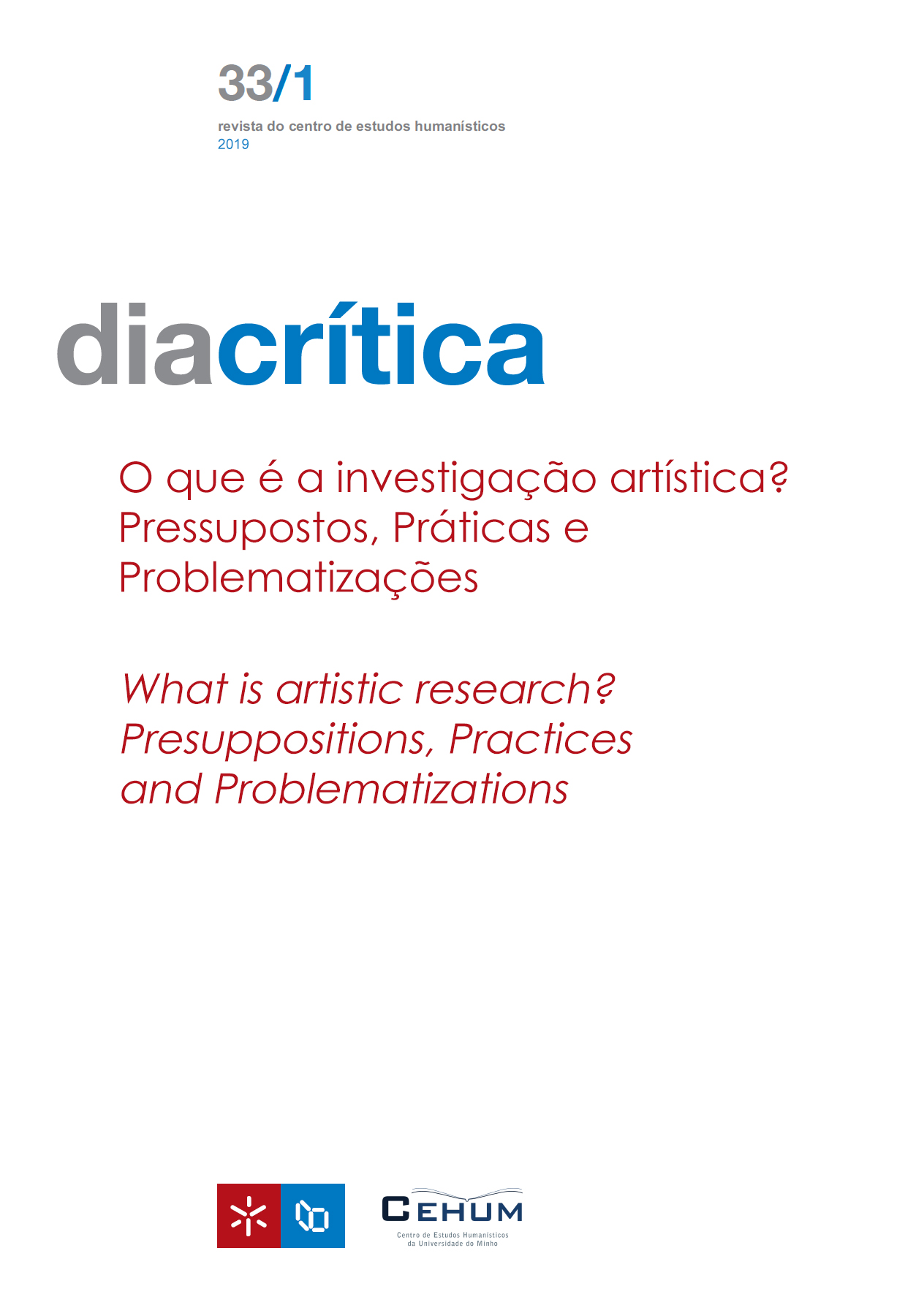Building Strength: a methodological approach in performance art context
DOI:
https://doi.org/10.21814/diacritica.5045Keywords:
Performance art, Case study, Intersectionality, Relational modelAbstract
This paper presents a performance art piece, Building Strength, as a case study for a relational model in performance art. This model was proposed some years ago within my artistic practice and also to connect with other artists’ practices. In this paper, the model, instead of being used to create a performance art piece, is proposed as a research tool to connect with my Building Strength as a researcher.
References
Bial, H.(Ed.)(2004). The performance studies reader. London: Routledge.
Carlson, M.(2004).Performance: A critical introduction. New York: Routledge.
Crenshaw, K.(1989). Demarginalizing the intersection of race and sex: A black feminist critique of antidiscrimination doctrine, feminist theory and antiracist politics.University of Chicago Legal Forum1(1989),139–167.
Damásio, A. (2010). Self comes to mind: Constructing the conscious brain.New York: Pantheon.
Franko, M.(Ed.) (2007). Ritual and event: Interdisciplinary perspectives. New York: Rout-ledge. DOI: https://doi.org/10.4324/9780203968192
Gil, J.(2001). Movimento Total –o corpo e a dança. Lisboa: Relógio d’Água.
Goldberg, R. (2011). Performance art: From futurism to the present. New York: Thames & Hudson.
Goffman, E. (1956).The presentation of self in everyday life. University of Edinburgh.
Goncharov, V.V.&Santos, T.J. (2011).Local estimates for minimizers of some convex integral functional of the gradient and theStrong Maximum Principle. Set-Valued Anal, 19(2), 179–202. DOI: https://doi.org/10.1007/s11228-011-0176-x
Guattari, F. &Deleuze, G. (1987). A thousand plateaus: Capitalism and schizophrenia. Trad. Brian Massumi. University of MinnesotaPress.
Heddon, D. (2007). Autobiography and Performance: Performing Selves. New York: Palgrave Macmillan. DOI: https://doi.org/10.5040/9781350390003
Heddon, D. (2002). Performing the self. M/C:Journal of Media and Culture, 5(5). Available in: <http://www.media-culture.org.au/mc/0210/Heddon.html>. DOI: https://doi.org/10.5204/mcj.1982
Jones, A. (1998). Body art/performing the subject.Minnesota: Minnesota University Press.
Lepecki, A. (2016). Singularities: Dance in the age of performance.New York: Routledge. DOI: https://doi.org/10.4324/9781315694948
Noë, A. (2012). Varieties of presence. Harvard: Harvard University Press. DOI: https://doi.org/10.4159/harvard.9780674063013
Noë, A. (2004). Action in perception. Cambridge: The MIT Press.
Phelan, P. (1993). Unmarked: The politics of performance. New York: Routledge.
Schechner, R. (1998). What is performance studies anyway? In P.Phelan & J.Lane(Eds.), The Ends of Performance(pp. 357-362).New York: New York University Press.
Santos, T.J. (2019). Mathematics and performance art: First steps on an open road. Leonardo52(5), 461–467. DOI: https://doi.org/10.1162/leon_a_01797
Santos, T.J.(2017). On Self Codes: Acase study within Mathematics and performance Art. CITAR Journal, 9(1), 29–37. DOI: https://doi.org/10.7559/citarj.v9i1.257
Santos, T.J.(2014). On a multiplicity: Deconstruction cartesiandualism using mathematical tools in performance. Liminalities: A Journal of Performance Studies, 10(3), 1–20.
Stern, D.N. (2004). The present moment in psychoterapy and everyday life. New York: WW Norton & Company.
Downloads
Published
How to Cite
Issue
Section
License
Copyright (c) 2023 Telma João Santos

This work is licensed under a Creative Commons Attribution-NonCommercial 4.0 International License.










